Benefits and Strategies for Teaching Art to Children with Autism: Help for Art Challenged Adults Why Art?
Art therapy provides many benefits for children with autism because it promotes emotional and mental growth as well as independence and collaboration skills. As an outlet for self-expression, imagination, and creativity, art can contribute deeply to improving a child’s fine motor skills, visual and spatial discrepancies, and coping (ActToday.org) For children with autism, art therapy can be particularly effective, especially because many are strong visual learners and process information differently from their typically developing peers.
Providing opportunities for children with autism to communicate through art can also be a great way to better understand them. Many children with autism can use art to communicate the thoughts and feelings they may have difficulty expressing. As teachers or parents of children with autism, art can be a great way to better understand a child’s interests and emotions (The Art-of-Autism).
The ARIS Connection to Art
ARIS (Academic Readiness Intervention System), the new autism curriculum from Stages Learning Materials, supports teachers and parents helping children with autism learn the skills they need to be successful . While ARIS covers standards academic and behavioral skills it also includes creativity, art, interactive games, and other activities to provide engaging learning experiences.
The ARIS lessons recognize the effectiveness of art therapy and art-based learning for children with autism. Designed to adhere to current research-based best practices for teaching language and social skills to children with autism, ARIS utilizes approaches such as photograph-based treatment to support children with autism who have minimal verbal skills. Moreover, ARIS lessons provide a means through which children with autism can utilize their visual strengths and process information in accessible ways.
For example, ARIS lesson 116 (available for free download) focuses on strengthening a child’s fine motor skills by supporting them as they draw a simple pictures. In this lesson, the teacher gives the instruction to draw simple pictures like a house or flower. This lesson is a prerequisite to more advanced tasks, like drawing with different writing instruments, drawing more complex pictures, and completing art projects.
Tips for Adults
The ARIS lessons also provide teacher tips for those adults who feel as if art is an area for growth. As adults, there are many resources that can help us support our child’s artistic abilities:
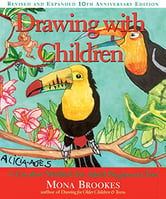 Drawing with Children by Mona Brookes
Drawing with Children by Mona Brookes
This book by Mona Brookes offers parents and teachers a guide for how to encourage drawing at home or in their classrooms. Widely used in schools and therapy settings, Drawing with Children provides extra support to parents and teachers who feel as if they do not know how to draw, encouraging them with step-by-step lessons and tips on how to create an environment that welcomes self-expression and creativity.
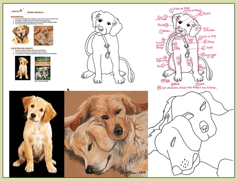 In addition to her book, Mona Brookes’ website, provides supplemental training tools and resources to ease the anxiety around teaching children to draw. Her “Realistic Drawing Curriculum” is a ten-chapter training program to support art with children and for adults. Additionally, the website has a blog with great information on topics such as the effects of the “Monart Method.”
In addition to her book, Mona Brookes’ website, provides supplemental training tools and resources to ease the anxiety around teaching children to draw. Her “Realistic Drawing Curriculum” is a ten-chapter training program to support art with children and for adults. Additionally, the website has a blog with great information on topics such as the effects of the “Monart Method.”
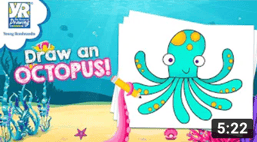 The Founder and CEO of Young Rembrandts Inc., Bette Fetter, believes that “everybody can learn how to draw” and that great benefits can come from doing art. Stressing the importance of a growth mindset, Fetter recognizes how critical it is to recognize the need for instruction in art so they can gain the foundational skills and confidence necessary to participate in art.
The Founder and CEO of Young Rembrandts Inc., Bette Fetter, believes that “everybody can learn how to draw” and that great benefits can come from doing art. Stressing the importance of a growth mindset, Fetter recognizes how critical it is to recognize the need for instruction in art so they can gain the foundational skills and confidence necessary to participate in art.
The Young Rembrandts channel on YouTube is another great resource for adults to use to learn how to draw so that they can better support their children with autism. With a whole host of “how-to-draw” videos, The Young Rembrandts series provide helpful tools to teach kids and adults how to draw.
Like Young Rembrandts Inc., The Gluck Method is a process founded on the principle that adults and children can learn how to do art. This process is broken into steps of fine art instruction and has proven successful for many. The Gluck Method has a training program, called “The Art of Drawing for Kids” which can be accessed online. This program is a great resource not just for children with autism, but also for adults who may want more support in developing their artistic abilities. With its step-by-step scaffolded video demonstrations, you will be sure to be drawing and painting in no time!
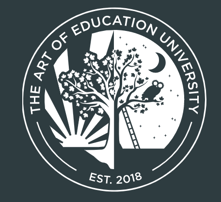 The Art of Education University is an online resource for art teachers. Founder and President of the Art of Education University, Jessica Balsely, states the mission of The Art of Education University as one that “grows amazing art teachers by providing rigorous, relevant, and engaging learning at every stage of their career.”
The Art of Education University is an online resource for art teachers. Founder and President of the Art of Education University, Jessica Balsely, states the mission of The Art of Education University as one that “grows amazing art teachers by providing rigorous, relevant, and engaging learning at every stage of their career.”
This university provides many tools to support adults’ artistic skill development such as various professional learning platforms, K-12 curriculums, graduate courses, magazines, and conferences. An accredited university, The Art of Education University provides individualized support and was founded to support adults at any stage of their art career by providing access to a Master’s degree, tailored professional development, and more.
Art therapy is extremely important for children with autism, especially in terms of their self-expression, communication, and developing their fine motor skills. Art can be an outlet for children with autism and can foster their independence and confidence, all while tapping into their strengths in visual learning and processing. As adults, we can support a child with autism’s art development skills in many ways, using the resources listed above, further promoting accessibility and inclusivity both in the classroom and at home.

Madeline Burroughs
Madeline Burroughs is a Specially Designed Instructional Coach at two high schools in Fulton County Schools in Atlanta, GA. In this role, she works to coach special education teachers in providing systematic, specially designed instruction that effectively targets students’ strengths and needs. Madeline received her Master’s degree in Education Policy and Management from Harvard Graduate School of Education in May 2019, and hopes to continue to serve as an advocate for all students with disabilities throughout her career.



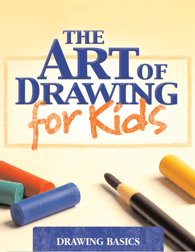 The Gluck Method
The Gluck Method
